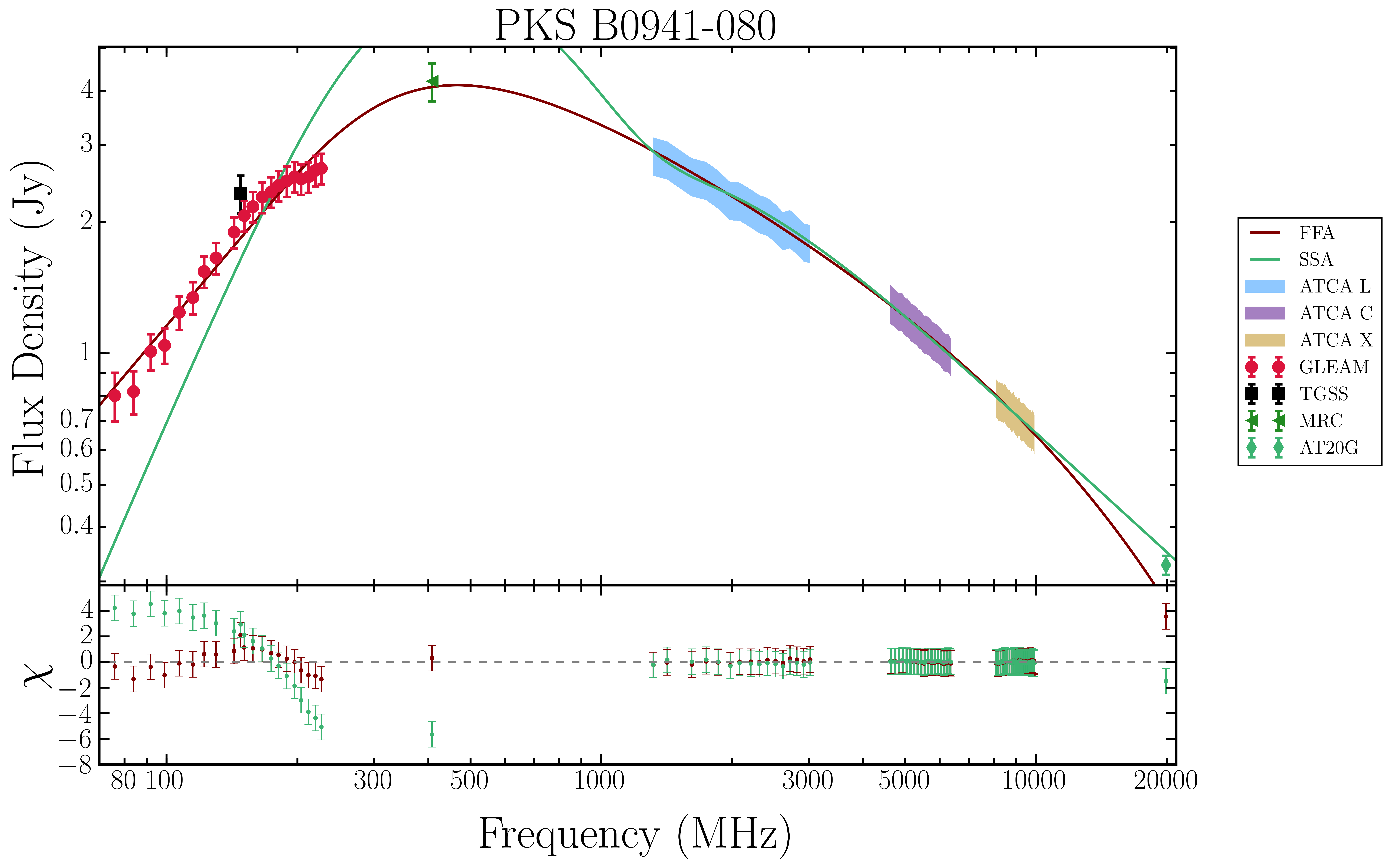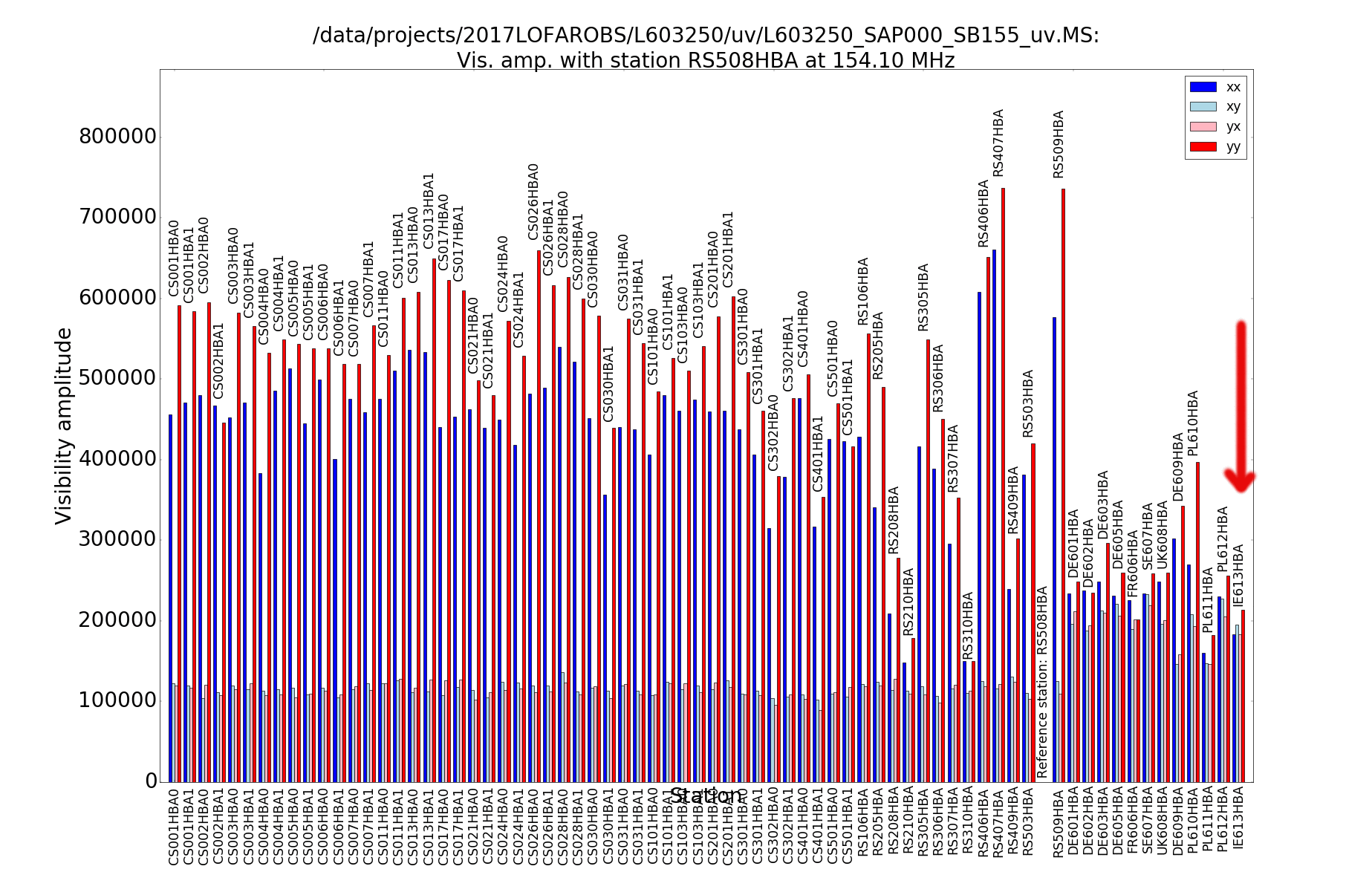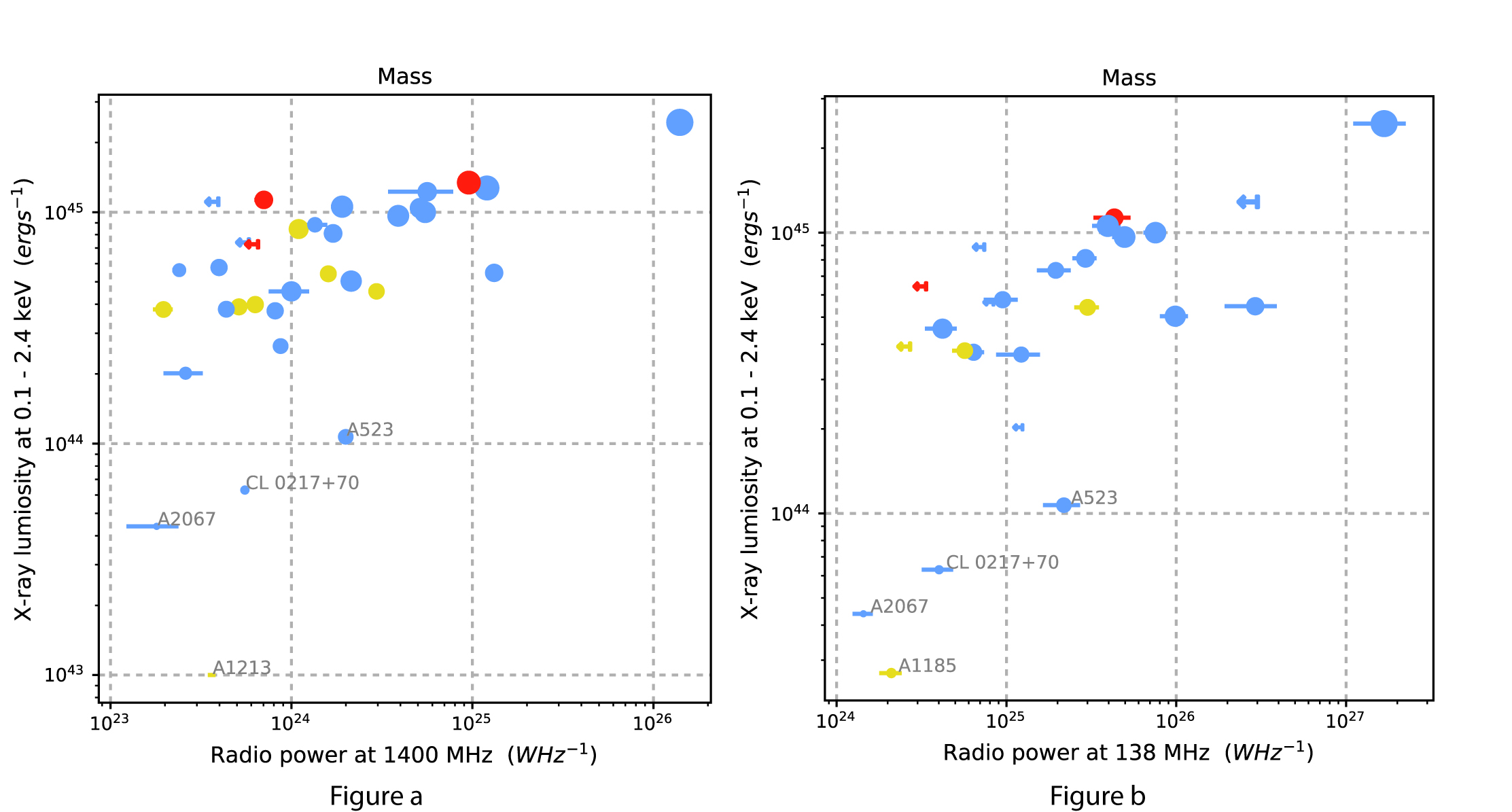 © Ronald Halfwerk
© Ronald Halfwerk
Before Saying Cheese
Testing Gemini LRU

A Xilinx Virtex Ultrascale+ FPGA (field programmable gate array), underneath the liquid cooling on the image, will be used for processing, just as on Gemini POC. The FPGA houses 6840 DPS (digital signal processing) slices that gives a processing capacity of about 3TMAC (Multiply and Accumulate). For storage a DDR4 SODIMM memory slot (same as used in modern laptops) will be used. Four QSFP 100Gbps interfaces are used for external communication outside Perentie (interfaces to LFAA and SDP). A 10GbE SFP module will be used for the control interface.
Watercolor LOFAR
 © Map tiles by Stamen Design, under CC BY 3.0. Data by OpenStreetMap, under CC BY SA.
© Map tiles by Stamen Design, under CC BY 3.0. Data by OpenStreetMap, under CC BY SA.
Peak spectrum sources and galaxy evolution: Modeling gigahertz-peaked spectrum sources over many magnitudes of frequency
 © n/a
© n/a
Identifying the absorption mechanism responsible for the spectral turnover is vital in differentiating between the "youth" and "frustration" models but until now the spectra of these sources have been too sparsely sampled to identify the dominant absorption mechanism in the population. We present the largest sample of GPS sources (~70) that has ever been observed over three orders of magnitudes in frequency (72 MHz - 20 GHz), providing exquisite spectra to test the dominate absorption mechanism in the population. We apply a Bayesian spectral fitting routine to investigate whether synchrotron self absorption (SSA), which is inline with the "youth" model, or free-free absorption (FFA), the "frustration" model, better describes the spectral turnovers of this population. In this talk we will reveal that the population appears to be dichotomous, with no one absorption mechanism dominant and discuss what this implies for the evolution of radio galaxies.
The spectra for one GPS source, PKS B0941-080, is presented here with its FFA and SSA models.
Group photo, take 2
 © -
© -
Maturation
 © CASA
© CASA
Actual work on the new system began in 1992, so 2017 is the 25th anniversary of the birth of aips++. Of course it was found that working together across the continents was not that easy, especially since the people involved had all written their own software packages and tended to be a little individualistic. Indeed aips++ had a long and difficult gestation period before evolving into CASA.
Apart from the inevitable culture wars, and rank amateurism, the project suffered from lack of focus because it was not crucial to a single major telescope (that happened later, when CASA was aimed at ALMA). But the biggest mistake was the failure to start with the implementation of a truly superior uv-data handling system that would have attracted users even without the new algorithms. Still, it produced some highly valuable components (e.g. a widely accepted data-format, fitting, coordinate conversions), most of them written by Dutchmen. And despite all the wrangling it fomented a worldwide software community in our field.
Over the past 25 years the founding fathers have matured as much as aips++ itself has, turning them into wiser and sadder men. So here is how they look today in comparison with 1991. The mugshots are ordered in the same left to right sequence as their younger versions in the original photo. We have Mark Calabretta (CSIRO), Jan Noordam (ASTRON), Bob Sault (then BIMA), Dave Shone (then Jodrell Bank), Geoff Croes (then head of computing at NRAO), Tim Cornwell (then NRAO), Ray Norris (CSIRO) and Tony Willis (DRAO).
We have also added Brian Glendenning (NRAO), at the lower right, as an honorary founding father. Probably more than anyone else, he was responsible for actually getting aips++ off the ground in the early 1990s. As Brian has pointed out aips++/CASA is now older than the original AIPS was when development of aips++ began!
Today, CASA can be considered a success. It supports the ALMA and JVLA telescopes, and the software libraries are widely used in applications scattered around the world.
ASTRON/JIVE Summer Students Exploring Westerbork

The summer students this year were
The 2017 summer program is nearly finished for the year, with the next three weeks full with the lunch time presentations of what the students researched and achieved. The summer students will be farewelled with a barbecue on Thursday 25 August.
Hanny's Voorwerp revisited
 © astropix.nl
© astropix.nl
The "blob" she found turned out to be a rare type of astronomical object called a quasar ionization echo.
On Christmas eve 2008 I managed to image this object from my back garden in Beilen with my 200mm telescope and a Canon DSLR camera:
http://www.astron.nl/dailyimage/index.html?main.php?date=20090102
The green blob is clearly visible.
Last spring I gave it another shot with a bigger telescope and a better camera, the result is shown above.
To assemble a true colour image, 3 hours worth of 600s integrations were made using LRGB filters and a cooled monochrome CCD camera on my 400mm telescope.
A lot of faint background galaxies can be seen in this image, to view the full image, please visit: http://www.astrobin.com/full/274013/0/
The parsec-scale jet of a young gamma-ray bright AGN
 © Yennifer Angarita, Robert Schulz, Jay Blanchard
© Yennifer Angarita, Robert Schulz, Jay Blanchard
Here, we present four new TANAMI observations to investigate the time evolution of the jet. Contrary to the first observation the images show only very faint extended emission close to the detection limit of our observations and almost all of the flux density is located in the compact VLBI core (see Figure). This could be due to the activity of the jet as suggested by small scale variability in the flux density or a lack of sufficient sensitivity or more likely a combination of both.
Hoisting the antenna
 © Peter Maat, Roel Witvers, Rick Kloosterman, Lesley Goudbeek
© Peter Maat, Roel Witvers, Rick Kloosterman, Lesley Goudbeek
In the picture, you can see a Vivaldi array (left), including many optical components and fibers (right), put back on a pedestal. The next step is to connect all the necessary equipment to the optical hardware and install the beamforming chip. So the following months can be spend to further test optical beamforming with the IBM chip.
IE613 joins regular LOFAR operations
 © RO / SOS group
© RO / SOS group
The image shows the correlated visibility amplitudes to IE613 (marked with a red arrow), along with all of the other LOFAR stations. A record number of 72 HBA antenna fields were correlated during the test run. The station location map shows the station with respect to the other stations comprising LOFAR. This brings the total number of stations to 51, and Ireland into the LOFAR family.
Pending calibration, the new station will be included in production observations.
Perseid Meteor Shower
 © Chen Xie
© Chen Xie
Last weekend, summer students and their supervisors were coming outside, enjoying the free music from Dwingeloo, and watching the Perseid meteor shower. Thanks to the dust left on the orbit of Comet Swift-Tuttle, we got a nice meteor shower, including fireballs!
Here is the picture of Dwingeloo telescope with bright falling star and Andromeda Galaxy.
Jet kinematics of NGC 660
 © Ilse van Bemmel, Jay Blanchard, Megan Argo, Avni Parmar
© Ilse van Bemmel, Jay Blanchard, Megan Argo, Avni Parmar
A massive outburst occurred between 2008 to 2010 in the centre of the galaxy which was around 10 times brighter than the largest supernova ever seen. 5 GHz e-MERLIN (2013) observations showed an increase in brightness by a factor of >1200 as compared to pre-outburst limits.
This image shows four years of monitoring of NGC 660 using the EVN starting from 2013 to 2016 observed at 1.4 GHz. Left are the four epochs reduced using AIPS and Difmap arranged in time order. Top right is a high resolution 8.4 GHz global VLBI HSA image (colour-map) overlaid with epoch two (contours). Bottom right shows the separation of the two components seen in the left image versus time fitted using weighted (red) and unweighted (blue) linear regression. The fitted slope of -0.585 +- 0.257 mas/year results in a jet speed of -0.078 +- 0.034 c.
Maser Bowshocks in a Water Fountain Outflow: A Case of IRAS 18043-2116
 © Ann Njeri Ross Burns Gabor Orosz
© Ann Njeri Ross Burns Gabor Orosz
IRAS 18043-2116 is a young post-AGB star that exhibits highly collimated high velocity H20 maser jets and is classified as a WF. Analysis from 3 epochs of VLBA observations showed 194 km/s jets and the maser features clearly show a bowshock shape (figure 1). The proper motions of the maser features were used to calculate the systemic motion of the source (Delta_R.A., Delta_Dec = -0.23, -0.983) mas/yr and the average internal motions reveal jet expansion of 1.76 mas/yr (vectors in figure 1).
Figures 2 and 3 show the transverse and longitudinal motions of the maser features in the WF fitted to the models of Ostriker & Lee (2001). The fitting clearly shows that the outflow in our source is jet driven rather than wind driven. This is the first evidence so far of a jet driven outflow with symmetric bowshocks in a water fountain obtained using VLBI observations.
3c196 Flanking Field
 © LOFAR EoR Collaboration
© LOFAR EoR Collaboration
In December 2016, the sky around 3c196 was observed with two beams. A flanking field was observed and analysed to see if it was a better prospect for EoR power-spectrum analysis given that the bright 3c196 source is attenuated by the edge of the beam. The foregrounds in this field were removed with a novel technique that entails manually modelling the brightest sources and automatically extracting sources using wsclean's multiscale option. The frequency stacked skyimage in Figure(a) shows the result of this source model subtraction on all the subbands between 114-133 MHz, along with its power spectrum. The power in the long and short baselines outside the foreground wedge is seen to be low. But this can be reduced further. The skyimage shows artefacts due to the sidelobes and ionosphere which contributes power to the power spectrum.
With the same source model, direction-dependent calibration was carried out to remove the detrimental effects due to the ionosphere and beam modelling errors. Figure(b) is the result of source subtraction on one frequency subband after it was calibrated in 25 independent directions. The power as indicated by the power spectrum has reduced considerably. These results indicate that this chosen approach of foreground removal is quite effective and the new 3c196 flanking indeed looks promising for EoR analysis.
Interactive LOFAR Map
 © V. Moss
© V. Moss
Layers are added via the Layers button on the right side of the map. The basic features include the positions of the HBA/LBA phase centres of each station (click to show names). You can also filter to see Core, Remote or International stations. More detailed features include the positions of each antenna/tile (coloured red if currently offline), cabinets, network pathways and possibly faulty antennas (as reported by RTSM). The drop-down menu will highlight a station if it is in the field-of-view, or if not, it will move the map so it is in the FOV. For more detailed usage, click the red-hat button or see here: http://tinyurl.com/ilm-help
Google Chrome is recommended as the most stable browser, but it has also been tested on Safari, Firefox and Internet Explorer. Some versions of Firefox have issues displaying the maps, in which case I recommend trying Chrome or updating your Firefox browser. Any ideas for new features, or reports of bugs in usage, are very welcome!
In Memoriam: Johanna Noordam (1946-2017)
 © Wedding Photography Haarlem
© Wedding Photography Haarlem
Many a bewildered foreigner, lost and lonely in the cold, dark and rainy steppes of the Dwingelderveld, has found a welcoming light and convivial company at Jan and Johanna's home in Pesse. The weekly Wednesday bridge sessions, running practically uninterrupted for 25 years from the early 1990's became an astronomical institution in its own right. Johanna was at the centre of it, hosting, welcoming, and patiently inducting new and green arrivals into the mysteries of the game. Of course, the bridge was but a pretext to the deep conversations afterwards.
Moving to (or even just visiting) a new country, or even just a new job in a new place, is always an uprooting and disconcerting experience -- the Wednesday bridge became the first social port of call for many new arrivals at ASTRON and JIVE, and fostered an invaluable atmosphere of community and inclusiveness. As people have moved on to many different corners of the world, some of them have taken the tradition with them, and thus the Pesse bridge evenings spawned "splinter cells" across all continents (save, perhaps, Antarctica -- though we do know of at least one Johanna-trained bridge regular that has set foot there!) In the process, Johanna became a surrogate mother to many of us.
Another famous event hosted by Johanna, the annual Softball Game, became the social highlight of the brief Dutch summer. With the ranks of the regulars bolstered by the arrival of the summer students, it was always a large and unruly crowd that needed to be fed and rehydrated after their exertions on the field. While Johanna was seemingly fully engaged in the party, finding the time to speak to everyone and put the new arrivals at ease, vast amounts of food streamed out of the kitchen on their own accord, and replenishment bottles apparated on side tables. Like all deep magic, this appeared to be entirely effortless.
Today, every time zone probably features at least one astronomer, or just a friend, who has been affected by Johanna's kindness, and who remembers her with gratitude and joy. She has left the best possible legacy, one on which the Sun never sets. We miss you, Johanna.
The picture shows Johanna and Jan at the wedding of their eldest son, only a few weeks ago. After that, the illness that left her unable to speak, read or write, rapidly finished its course, releasing her from her cruel state.
MeasurementSet
 © Casacore
© Casacore
The first version of the MeasurementSet was defined in 1996 by Mark Wieringa (CSIRO) and Tim Cornwell (NRAO). In 2000 it was revised by Athol Kemball (NRAO) and Mark Wieringa.
The MeasurementSet v2.0 is described in Casacore note 229. It is a relational database-like data structure consisting of a main table containing the visibilities and some meta data. Several index fields refer to meta data in subtables such as ANTENNA. The table structure and some data fields in the tables are shown in the image. Also some LOFAR-specific tables are shown.
Care was taken that the format is easily extendible with instrument-specific tables and columns. In that way instrument-specific software can take advantage of these tables and columns, while general software such as CASA can still operate on the same MeasurementSet.
The MeasurementSet component is part of the Casacore package (see AJDI of June 5th, 2015). It is built on top of a few other Casacore components, in particular the Tables and the Measures. It was already mentioned in the AJDI OF August 11th that Dutch people played an important role in developing the AIPS++ software. This is certainly true for the MeasurementSet: Mark Wieringa has written most of the MeasurementSet code, Wim Brouw wrote the Measures code and Ger van Diepen the Tables code.
The wide adoption of the Measurement Set can be seen as one of the biggest successes of the AIPS++ project. In fact, a successor to the Measurement Set is being conceived that will also serve the next generation radio telescopes.
A LOFAR/MSSS view of extended radio sources
 © n/a
© n/a
In the first step of large search in Multifrequency Snapshot Sky Survey (MSSS), we focus on the radio halos. Our sample has 38 clusters, and we manage to recover the fluxes of 27 clusters (including upper limits). It is already a large cluster sample and doubles the number of clusters with diffuse radio emission at low frequency (
In Figure a and b, the size of data points indicate the mass of clusters. And the color shows the cluster dynamic state (blue, red, and yellow for merging, relaxed, and no information, respectively).
MeerLICHT installed!
 © MeerLICHT team
© MeerLICHT team
Last week the telescope has been collimated and focused and the parallactic mount has been accurately aligned onto the pole for long exposure images. During the next months the remote control of MeerLICHT will be further implemented and tested. At the end, the telescope will be remotely controlled from the Radboud University in Nijmegen.
One of these days we will present first light images as soon they have been processed....








